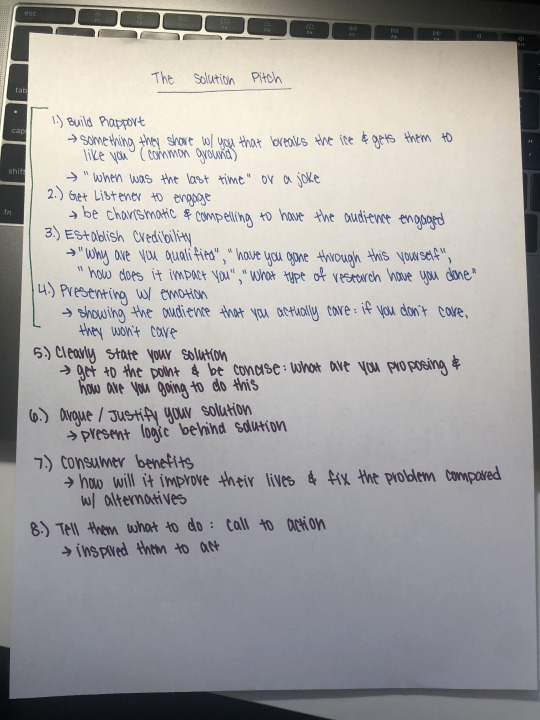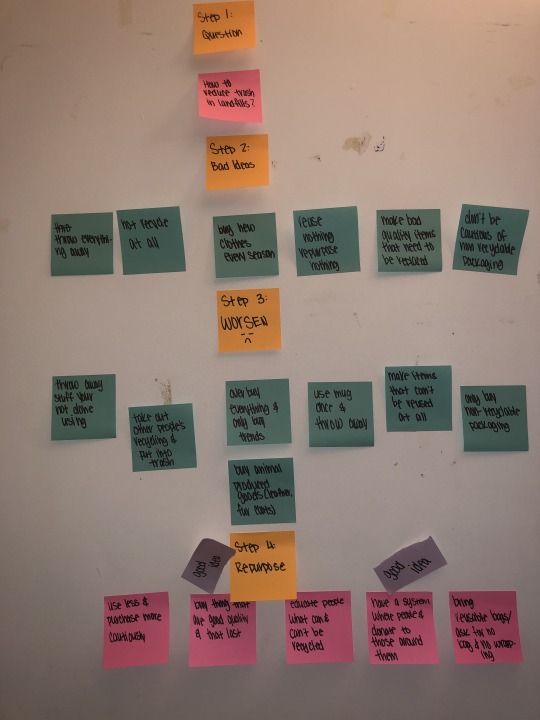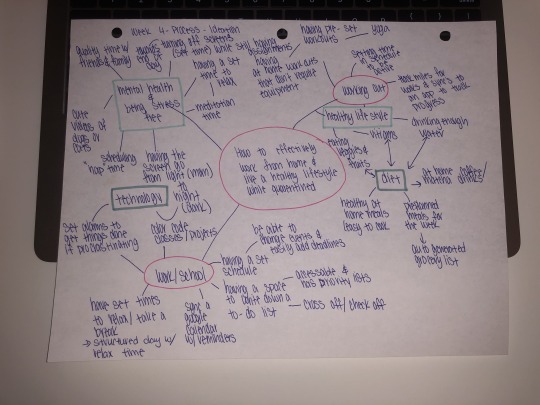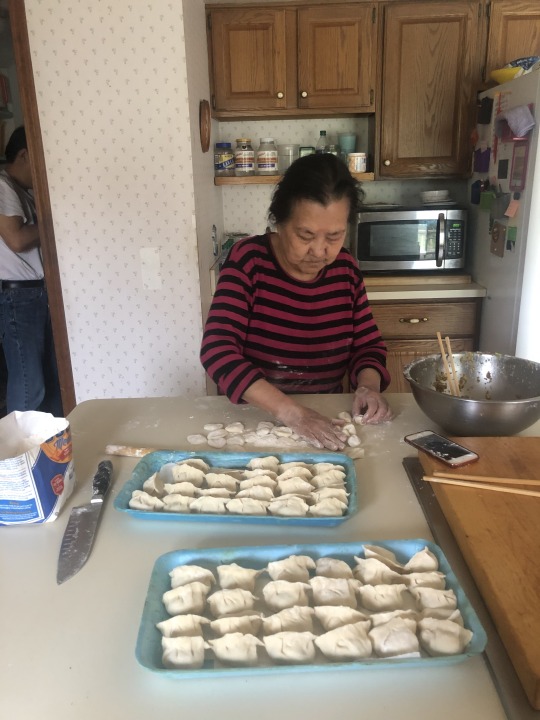Link
0 notes
Photo


Implementation - Pitch
I took some detailed notes on what Ben said that a good pitch looked like and tried to build a script that worked with this structure. I spent some time thinking of ways to connect with the audience and rewording my script to make it better. Just some of the background work for the Implementation stage.
0 notes
Video
tumblr
Implementation - Pitch
Here I watched the video Ben made for us to ensure that we have good stock pitches that relate with the audience. Here is my pitch of having a new system in our dining halls to decrease the amount of food waste.
0 notes
Video
tumblr
Prototyping
This is a video of my partner and I coming up with a prototyping of our idea on how to decrease food waste in our dining halls in 10 minutes.
The idea there is that we are trying to make a self serve station and a compost and recycling bin for Miami University dining halls.
0 notes
Link
0 notes
Photo


Ideation - Lotus Blossom
This was my favorite all time technique that we learned in class. This is by far the most time consuming, but in the end I found it to be the most helpful when looking at potential solutions.
While the other techniques (mind mapping and bad ideas/reverse brainstorming) utilized divergent thinking and ambiguity. This technique was the perfect place for the two mindsets. By having so many ideas and places to put post-its it was really easy to think of good and bad ideas. In the end looking for potential solutions was really easy since every idea/thought was up on the wall.
0 notes
Photo


Ideation - Bad Ideas/Reverse Brainstorming
Here I used the technique of reverse brainstorming/bad ideas to come up with potential better solutions to my problem. I found this technique to be extremely helpful. At first I was extremely doubtful of this technique, but I was completely proven wrong.
When thinking of the bad ideas I really utilized divergence thinking. I did not hold anything back and just let all of my ideas onto paper knowing that I would be able to converge later on. There was also some ambiguity within this step since I was stuck in that uncomfortable space when divergent thinking.
0 notes
Photo



Ideation
Here I used the mind mapping technique we learned in class to expand on effectively getting work done at home. I did it a couple of times with the problem “effectively getting work done at home” to see what would happen if I changed around the main question.
I was really just letting my ideas out and utilizing the divergence mindset that we learned earlier in the year. I just wanted to get my ideas down onto paper to see what I had to work with.
0 notes
Photo


My Road Map through my journey thus far.
How to decrease our carbon footprint on college campuses: specifically looking at decreasing food waste
0 notes
Photo


Clarify - Heart Understanding
Since I have been home on quarantine I have been able to watch and talk to some of my family members.
I was able to observe my grandma cook, which is something that I have been doing since I was little. I talked to her about how she was so careful about waste. She used everything that she needed and was careful with all the ingredients. We spoke about how she grew up in a household where she had nothing and it is a privilege to be in the place she is now. She talked a lot about reusing everything and making sure that everything can be multipurpose. This is something that I see every day while I live at home. I see what she reuses soup cans and find other ways to reuse the empty tin cans. (Here you can see here she reuses old glass jars) She said that she has always been this way and even when she could afford much more she is always being things very sparingly.
0 notes
Photo


Clarify - All Head Understanding Work
This week I was able to get into contact with an executive member ,Ethan Jones, Secretary of ECOREPS at Miami University. We were able to have a conversation pertaining to the pros and cons of Miami University’s carbon footprint and how Miami and taking steps to decrease our waste.
On the right page are the notes that I wrote down when Ethan and I were talking. I learned a lot of information that I would not have otherwise have known! Highlighted some of the main points that we talked about. I really enjoyed talking with Ethan and learned a lot about our campus.
1. Western campus is GEO thermal. This means that all heating and cooling of water as well as air conditioning and heating is much more inefficient. (All dorms on western campus, Shriver)
Miami is going to make this change as well to north quad, south quad, and central quad next and then move to make the entire campus geo thermal.
He said that food waste and food usage was the most inefficient on our campus. It adds greatly to our carbon footprint and we should get rid of buffet style and students should pay for what they eat. It is cheaper for students (if they want just one bowl of cereal then it is much cheaper and more efficient for everyone)
I thought this was a really good idea that I had never thought about!
1 note
·
View note
Quote
If I had an hour to solve a problem I'd spend 55 minutes thinking about the problem and 5 minutes thinking about solutions.
Albert Einstein
0 notes
Photo


Clarification: Heart Research - Observations
I went downstairs in my dorm and observed some students making dinner. I wanted to observe how college students may be contributing to our carbon footprint.
I talked to some of the international students about what they were cooking. They actually told me that they drove to the Cincinnati area to get some of the ingredients required for the dishes that they prepare. Since they cannot be found in Oxford. They drive there maybe once a month with their friends and all stock up on ingredients such as sauces, spices, and ingredients that normally can’t be found in our regular grocery stores. They were super nice and their food smelled amazing.
0 notes
Text
Clarify - Understanding the Problem
In decided potential solutions to “decreasing carbon footprint on college campuses” I spent a good few days slowly learning about how colleges across the United States contribute waste. In order to solve problems I really needed to be able to understand the problem in order to find potential solutions. This research really allowed me to just be curious and just explore.
So what research did I find?
1. 10 suggestions on how to handle carbon footprints across colleges
https://www.co2nsensus.com/reducing-carbon-footprint-in-schools
2. How can we as individuals decrease our carbon footprint
https://blogs.ei.columbia.edu/2018/12/27/35-ways-reduce-carbon-footprint/
3. The importance of decreasing food waste within landfills
https://www.huffpost.com/entry/food-waste-at-us-colleges-and-what-to-do-about-it_b_57bcbc22e4b007f1819a1070
4. What is Miami University doing to decrease our carbon footprint?
https://miamioh.edu/about-miami/sustainability/
5. Miami University’s plan towards Carbon Neutrality
https://miamioh.edu/news/top-stories/2019/11/converting-campus-off-steam-by-2026.html

Identifying 4 Experts

In Summary
“I was able to go online and get a good grasp of everything that I needed to know about sustainability, but I’m sure there are still things I am missing. I found ways that our university could be more sustainable and a few ways we could change things to make our campus even more green. It all starts with us individually in order to make a change. We need to spend more time educating the people around us about what sustainability is and how we individually can make a change. We could implement small things like meatless Mondays in an effort to decrease the amount of meat and dairy we consume. Even by having posters in our laundry rooms about using less hot water to wash our clothes it would make a huge difference in our carbon admission as a campus. Down to how we get out food and dispose of it. I was able to read about the work we have already done here at Miami and while it is impressive, we are still not even close to being one of the cleanest top 30 universities in the US.”
(Taken from Homework: Week 1 - Process - Clarify (understand))
1 note
·
View note
